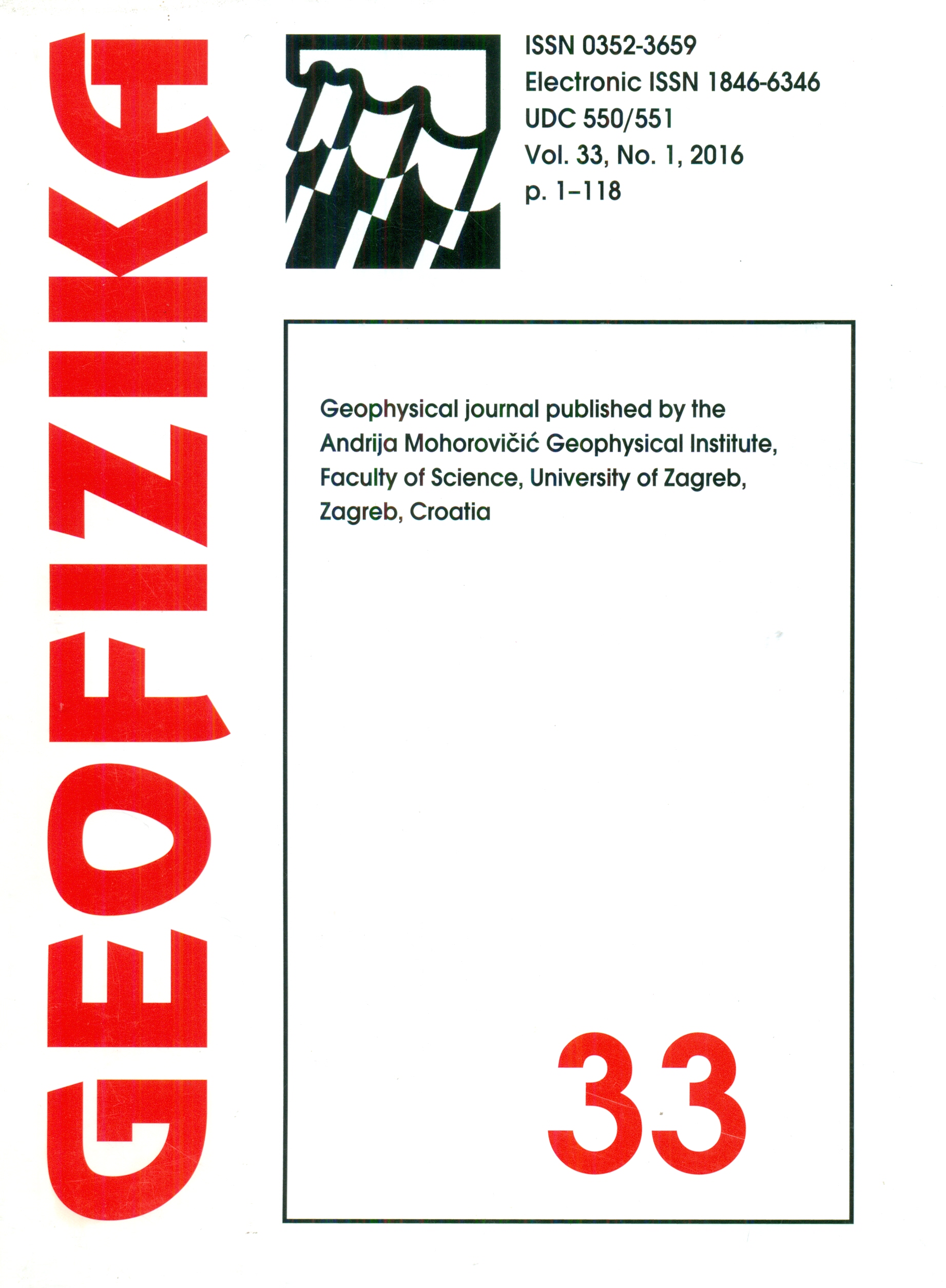Generation of 2D flood inundation maps of Meriç and Tunca Rivers passing through Edirne city center
DOI:
https://doi.org/10.15233/gfz.2016.33.7Keywords:
flood map, 2D model, MIKE 11 and MIKE 21, Meriç River, discharge channelAbstract
Natural disasters can be defined as hazardous and usually large scale natural incidents that may cause loss of lifes and property and that occur mainly or completely out of human control. Due to climatic changes draughts are being experienced in various parts of the world in the recent years. Floods are also observed to take place more frequently and severely in some regions. As it is reported by many scientific studies, flood modeling can only be possible through the designation of flood risk management strategies and the determination of the dynamic behaviors of rivers. In this context, the city of Edirne located downstream of Meriç River Basin, which runs through Turkish, Bulgarian and Greek soils, is frequently exposed to flooding. The majority of the currents that cause this take place within the Bulgarian borders, which covers 66% of the basin. This part of Meriç River Basin has a mountainous geography, it has a rather high average slope of 12.5% within Bulgarian lands, while in Edirne it is quite low with a bottom slope of 0,00036. In the present study, 2D flood modeling of the Meriç and Tunca Rivers that passes through Edirne city center were made and flood inundation maps were generated. With the analysis of the results obtained from flood inundation maps, a drainage channel capable of discharging flood rates that exceed the maximum rate Meriç River main bed can accommodate was designed, and the downstream conditions of the channel were evaluated.
Downloads
Published
Issue
Section
License
Copyright (c) 2021 Geofizika journal

This work is licensed under a Creative Commons Attribution-NonCommercial 4.0 International License.

